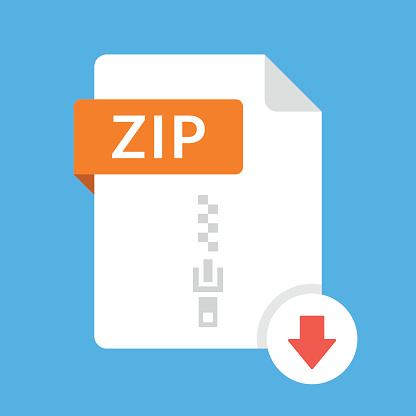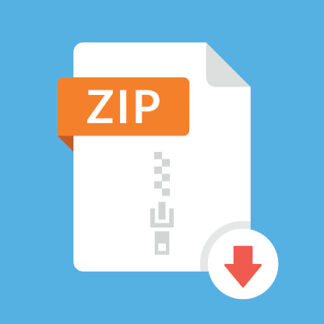Description
Task: You are given a set of RGB images (32 × 32 pixels) with one (and only one) of the following objects:
aves, flights, bucks, felines (labels 0, 1, 2 and 3 in run_me.py, respectively). The goal is to train a model
to recognize which of the objects is present in an image. Some samples of the training images are:
Figure 1: aves Figure 2: flights Figure 3: bucks Figure 4: felines
You will train different models (Decision Trees, Nearest Neighbors, Linear models, Neural Networks), compare their performances and training time, and perform model selection using cross-validation.
The dataset is already partitioned into train and test blocks. Each partition is saved in a numpy binary format
(.npy) file.
• Size of training set: 20, 000 × 3072
• Size of testing set: 4000 × 3072
Loading the files (helper code provided in run_me.py) will result in a N × p matrix, where N is the
number of training/testing examples respectively and p = 3072 is the number of features. This loads a
2
numpy array containing values between 0 and 256 (which are normalized, ie. divide each value by 256).
The labels are not provided for the images in the test set. You need to predict the test labels, kagglize
your predictions, upload to Kaggle to an accuracy score. For this assignment you are allowed to use
sklearn.model_selection.* functions.
Questions:
1. (25 points) Decision trees:
(10) a. A labeled data set D with N samples, each of which consists of F binary features, is given. Suppose
that feature fi was chosen in the root node while building a decision tree, splitting the data in two
subsets, D0 and D1. Give an expression for the information gain in this case. More generally, what
criterion can be used to choose which feature to use?
(15) b. Train 5 different decision trees using the following maximum depths {3, 6, 9, 12, 14}. Using 5-fold
cross-validation, estimate the out of sample error for each model, and report them using a table. How
does the maximum depth of the tree affect the estimated accuracy? Explain in at most 4 sentences.
Choose the model with lowest estimated out of sample error, train it with the full training set, and
predict the labels for the images in the test set. Upload your predictions to Kaggle and report the
accuracy on the public leaderboard. Is the predicted out of sample error close to the real one (test
set)? Make sure that your report clearly states which model was chosen and what was the predicted
out of sample error for it.
2. (25 points) Nearest neighbors:
(10) a. A labeled dataset D with N samples, each of which consists of F features, is given. Suppose that
a new sample X wants to be classified using KNN, what is the time complexity of this operation if a
brute force approach is used?
(15) b. Train 5 different nearest neighbors classifiers using the following number of neighbors {3, 5, 7, 9, 11}.
Using 5-fold cross-validation, estimate the out of sample error for each model, and report them using
a table. Choose the model with lowest estimated out of sample error, train it with the full training
set, and predict the labels for the images in the test set. Upload your predictions to Kaggle and report
the accuracy on the public leaderboard. Make sure that your report clearly states which model was
chosen and what was the predicted out of sample error for it.
3. (10 points) Linear model:
(10) a. Train a linear model using L2 regularization, with the following regularization constants α =
{10−6
, 10−4
, 10−2
, 1, 10}, and with hinge and logistic regression loss (you will train 10 classifiers).
Look at sklearn.linear_model.SGDClassifier to answer this question. Using 5-fold
cross-validation, estimate the out of sample error for each model, and report them using a table.
Choose the model with lowest estimated out of sample error, train it with the full training set, and
predict the labels for the images in the test set. Upload your predictions to Kaggle and report the accuracy on the public leaderboard. Make sure that your report clearly states which model was chosen
and what was the predicted out of sample error for it.
3
4. (40 points) Neural Network: You will train several neural networks (NN) with one hidden layer, as the
one shown in Figure 51
.
Figure 5: Sample Neural Network
• The size of the input layer, I, is determined by the number of features, #I = 3 × 32 × 32 = 3072
• The size of the hidden layer, h, will be set to M, for M ∈ {5, 40, 70}
• The size of the output layer, O, is determined by the number of classes. For this dataset this is set to 4
The input layer is densely connected to the hidden layer. The hidden layer is densely connected to the output
layer. Given an input x the output is given by,
~f(x) = c + V hx (1)
hx = σ(b + W x) (2)
σ(s) = tanh(s) (3)
dσ(s)
ds = 1 − tanh(s)
2
(4)
Where b is the bias in the hidden layer, W the matrix that contains the weights of the connections between
the input and the hidden layer, V contains the weights between the hidden and output layers and c is the bias
in the output layer. Note that ~f(x) is a vector of length matching the number of outputs. Finally, the loss
function is defined as
L(x, y) = −~f(x)y + logX
3
j=0
exp~f(x)j (5)
1
Image extracted from http://neuralnetworksanddeeplearning.com/chap5.html
4 CS 589
where y is the correct label associated to the input x and ~f(x)i
the output of the i-th neuron.
For this HW assignment we would like you to compute the partial derivatives by hand per example to better
understand the inner workings of error backpropagation algorithm. But computing the partial derivatives per
example and updating the weights of the NN is time consuming from a programming stand point. In order
to balance these two goals, we have designed the HW assignment such that you will compute the partial
derivatives for a single example and compare your outputs to an automatic differentiation toolbox called
autograd. You can install autograd by typing,
pip install autograd
in a terminal or Anaconda. More information on the toolbox is available here: https://github.com/
HIPS/autograd/blob/master/README.md. For part (a) you will compare the outputs of your
partial derivatives to that of autograd for a single data example. For part (b) you will only use the autograd
toolbox to train a neural network. The autograd toolbox computes the partial derivaties for all 20, 000 train
examples simultaneously hence speeding up the training of your NN. Helper code is given for both parts of
this question.
(20) a. Implement backprop for one data example: The expressions of the gradient of the loss function
for a single data example with respect to the four parameters (c, V, b, W, h) is given in the lecture
handout. Use these partial derivatives to,
1. Write python Code computing partial derivatives: Write code in python implementing the
four partial derivatives. Make sure the dimensions match. To get you started we have provided
some helper code in function ‘NN_gradient_one_sample.py’. Please write your partial derivatives in the ‘partial_derivatives’ function and list your code in your HW2 report as,
dLdc = …
dLdV = …
dLdb = …
dLdW = …
Note that we would like you to list only the four partial derivatives. Please do not list import,
print, function definitions, comments or other irrelevant pices of code. Ideally the code listing
will be between four and ten lines.
2. Output values of partial derivatives for one data example: Copy and paste the output of
‘NN_gradient_one_sample.py’ in your HW2 report. Sample output should look like,
Loss = 123…
dLdc, Autograd
456…
dLdc, partial derivative
456…
etc,
(20) b. Train NN using autograd toolbox: Train three neural networks using {5, 40, 70} as values for M.
Couple of points on the specifics of the NN to be used for this question,
1. Use 1000 epochs (an epoch is defined as one forward and one backward pass on all training
examples)
5 CS 589
2. Fixed learning rate of 0.0001
3. Use ‘tanh’ functions for the hidden units
4. Use fixed momentum of 0.1
5. Regularization of the logistic loss function with a constant fixed penalty of 10
To get you started we have provided a helper file ‘NN_one_layer.py’ with these default settings. In
this file, we have also included autograd functions to compute the gradients for the entire train dataset.
Add your code to this file to,
1. Plot the mean training logistic loss (Equation 5) as a function of the number of epochs for
each NN (one figure with 3 lines, make sure to label the axes and include legends; look at
Code/plotting.py to get started)
2. Report, using a table, the training time (in milliseconds) for each NN
3. Using just one train-validation stratified split (uniform number of examples from each class in
both train and validation sets) of 0.8/0.2, estimate the validation set error for each NN, and report
them using a table. How does the number of hidden units affect the estimated accuracy? Explain
in at most 3 sentences. Choose the NN with lowest estimated validation error, train it with the
full training set, and predict the labels for the images in the test set. Upload your predictions to
Kaggle and report the accuracy on the public leaderboard. Is the predicted validation error close
to the real one? Make sure that your report clearly states which model was chosen and what was
the predicted validation error for it.
Extra Credit: Finally, here are some extra-credit problems. These are far more difficult than the above
problems and have very small point values. These are also deliberately more open-ended, leaving you
more space for creativity. As a result, you will need to carefully describe exactly what you did for each
problem. To maximize your score with limited time, you should make sure the above problems are
done thoroughly and ignore these. We will be very stingy in giving credit for these problems– do them
only for the glory, and only at your own risk!
5. (5 points) Extra credit: For the previous question you were asked to train a neural network with only
one hidden layer. Derive the expression of the gradient with respect to the parameters for a Neural Network
with 3 hidden layers, and train and evaluate the system using the training and testing dataset. Report the
results obtained (accuracy and training time) using tables.
6. (5 points) Extra credit: Visualize the weights in the input and hidden layer and write your interpretation
of the weight matrices. This is particularly interesting in image datasets to see the correspondence between
the input images and what the NN is learning.
6 CS 589



